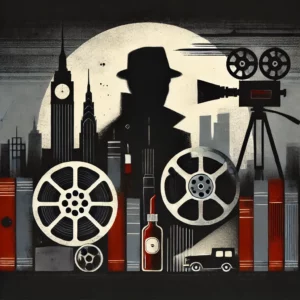
Crime has always fascinated audiences, whether through gripping books or haunting films. By delving into the criminal underworld, creators like Andrew Dominik, Peter Corris, and Georges Franju have brought a raw, human touch to their stories. This article explores how these key figures have used different mediums to depict crime and why their works remain influential.
1. Andrew Dominik: The Art of Cinematic Crime
Andrew Dominik’s films Killing Them Softly and The Assassination of Jesse James by the Coward Robert Ford have earned critical acclaim for their thought-provoking approach to crime and morality.
- Killing Them Softly (2012) blends crime drama with socio-political commentary. Set during the 2008 financial crisis, it tells the story of hitmen navigating a crumbling economy. The film critiques capitalism, showing crime as a metaphor for the harsh realities of business.
- The Assassination of Jesse James by the Coward Robert Ford (2007) is a poetic exploration of betrayal, celebrity, and obsession. Brad Pitt delivers a haunting portrayal of Jesse James, revealing the blurred lines between fame and villainy.
Both films transcend traditional crime narratives, making viewers reflect on the deeper meanings behind violence and betrayal.
When discussing betrayal and psychological motives in crime, check out our article on The Psychology of Revenge: Why Do We Crave Justice?
2. Peter Corris: Pioneering Noir Fiction with the Cliff Hardy Series
The late Peter Corris is often referred to as the “Godfather of Australian crime fiction.” His iconic Cliff Hardy series, spanning over 40 novels, helped shape Australian noir and gained international recognition for its gritty realism.
Hardy, a private detective navigating Sydney’s underbelly, embodies classic noir themes: flawed characters, dangerous secrets, and moral ambiguity. Corris’s writing combines humor, action, and sharp commentary on Australia’s social landscape.
Why It Matters:
Corris’s influence extends beyond Australia, as his work demonstrates the global appeal of noir. His success paved the way for Australian crime fiction to gain international attention.
For readers who enjoy exploring how noir characters develop, see our discussion of Lupo Danish Never Has Nightmares by Jimmy Callaway.
3. Georges Franju’s Nuits Rouges: A Hidden Gem of Noir Cinema
Georges Franju’s Nuits Rouges (1974) is a lesser-known but essential noir film that mixes crime, mystery, and surrealism. The story revolves around a masked criminal mastermind seeking hidden treasure, but Franju elevates the plot beyond a typical crime thriller by incorporating dream-like visuals and eerie atmospheres.
- The film stands out for its ability to blend genre conventions with avant-garde aesthetics, making it a visual feast for noir enthusiasts.
Why It Deserves Attention:
Nuits Rouges challenges the boundaries of noir by incorporating themes of identity, morality, and fantasy. Its influence can be seen in modern crime thrillers that borrow from Franju’s daring style.
Discover more about the intersection of mystery and identity in our analysis of Criminal Psychology: What Happens in the Mind of a Criminal?
4. Connecting Literature and Cinema in Crime Fiction
Dominik’s films, Corris’s novels, and Franju’s experimental noir all showcase how crime fiction can transcend genres. Their works highlight key themes:
- Power and morality: Whether through betrayal in Jesse James or Hardy’s investigative dilemmas, crime stories often explore how power corrupts.
- Identity and duality: Franju’s masked villain and Corris’s morally complex characters demonstrate how crime exposes human contradictions.
- The societal impact of crime: Dominik’s critique of capitalism reflects how crime is often a symptom of larger systemic issues.
These works remind us that crime fiction isn’t just about solving mysteries—it’s about uncovering truths about society and the human condition.
For an in-depth look at how crime narratives critique society, read our review of The Golden State Killer: A Chilling Legacy.
From Dominik’s cinematic brilliance to Corris’s hard-hitting novels and Franju’s experimental storytelling, the world of crime fiction is rich with diversity and depth. These creators remind us that behind every crime is a story worth telling—a story that can entertain, enlighten, and provoke thought.